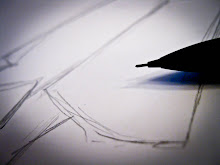“I remember going on a raid one time in which the counterfeiter and the local enforcement officials seemed to know each other very well. He said hello. He actually served tea to us when we went and seized the product and carted the product off."
- Dan Chow
Law Professor, Ohio State University
When the Apple iPhone first debuted in 2007 at the hefty sum of $600, no one really minded the price. It was a piece of breakthrough technology, and those who could afford it were sure that their dollars were well spent. The iPhone 3G then appeared in 2008 for $400, and in 2009, the 3GS for $500.
Meanwhile in China, the iOrgane "Wang TouchCool Orange F4" sold for the equivalent of about $200 in 2008, mere months after the iPhone 3G's release.
How's that for legitimate?
Counterfeit Chinese products are starting to become a stereotype, and with good reason -- name a product, any product, and there are sure to be one or more Chinese knockoffs that seem exactly the same as the original.
Some counterfeited designs, especially those in the technology fields, are amazingly accurate. In a few cases, the ripped copies are even on par with their originals in both look and functionality, such as the LG Chocolate. After the phone was first released in Korea, it took LG a few months to develop a working model for Chinese consumers. Before the months were up, Chinese counterfeiters had already manufactured and started selling their own "Chocolates," so realistic that buyers were convinced that the LG version was the fake.
Even outside the realm of electronics, China's counterfeit processes can create products that trick quality-assurance robots. "Callaway" golf clubs, sold by the bundle in Donguan, China, were taken to the actual Callaway's California-based headquarters to be put to the test.. and passed. They looked like carbon copies of the real thing. Only when a saw was taken to the head was it made obvious that the "titanium" driver was actually two steel pieces welded together to form a flimsy imposter.
As we get even further away from electronics (which seem to be China's strongest and fastest counterfeit operations) however, cheap ripoffs are much more prevalent. Take the Harry Potter series, for example: a collection that most kids nowadays are quite familiar with. The Chinese have taken what is essentially fan fiction to sell as new novels in the series, among them Harry Potter and the Waterproof Pearl, Harry Potter and the Golden Armor, and Harry Potter and the Showdown.
So what's all this have to do with design?
Pablo Picasso was once said to have noted, "Good artists copy; great artists steal." Replace "artists" with "designers," and these words of wisdom still bear relevance. As wizened and revolutionary a man Picasso was.. I'm pretty sure he didn't mean it like this.
---
Sources: http://www.cbsnews.com/stories/2004/01/26/60minutes/main595875.shtml, http://www.electronista.com/articles/08/10/24/chinese.iphone.copy.seen, http://www.11points.com/Books/11_Amazing_Fake_%27Harry_Potter%27_Books_Written_In_China, http://www.geckoandfly.com/785/the-perfect-fake-electronics-a-catch-me-if-you-can-scenario, and http://www.apple.com.





No comments:
Post a Comment